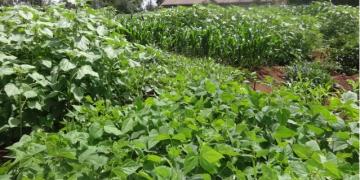The solution was to empower the communities to take action using sustainable agriculture through their voluntary involvement. Community members were involved in describing their situation and finding solutions which they were willing to implement, emphasizing participation and action to stop the environmental and food security decline. They proposed a number of activities which they agreed to commence. They identified multiple solutions including soil conservation measures and planting of indigenous trees in their fields, land use planning with local bylaws to be monitored and enforced by village environment committees, water source restoration using indigenous trees, and planting of grasses along soil & water conservation measures in farmers’ fields. The capacities of the communities were built with the help of NGOs but the initiative was implemented as a participatory action research in which villagers led the collaboration with the NGOs in a supportive role. They worked closely with the community leaders and early-adapter farmers to further refine the solutions and develop specific activities to address the challenges.
The communities have embraced the goal of increasing food security and environmental restoration by building capacity of community members by the two local NGOs. The first farmers engaged have noticed increased production and arresting soil erosion and increased water retention on their farms. The focus has addressed education, starting in the higher altitude farms. Not all obstacles like population have been addressed.
1 - The NGOs worked with the communities to find solutions and develop activities which they themselves identified. These discussions created ownership and led them to address other challenges.
2 - Instead of following methods of previous initiatives which primarily used exotic tree species, used a difficult-to-use technology for measuring contours (line-level) which farmers could not do themselves, and imposed engagement of farmers, this collaboration showed change by example, engaged first lead farmers voluntarily, generated adherence to bylaws first by education, later by coercion, used indigenous trees, and introduced simple tools & technologies.
3 - Historical approaches have left bad memories; forced destocking is illogical to the local agro-pastoralists whose assets are measured in land and livestock numbers.
4 - Population pressure has caused cultivation of steep lands which should not be farmed. Households high on the hillsides need to take the lead; those lower down suffer from the effects of the poor practices above them and their efforts are destroyed during heavy rains.
